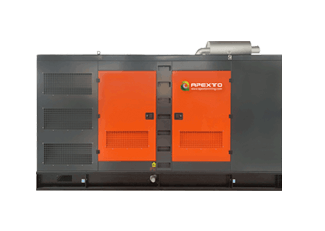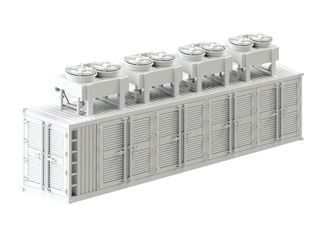KDA RATE
All CoinsWeighted average KDA rate
KDA exchange rate change
KDA characteristics
About Kadena
What Is Kadena (KDA)?
Kadena is a proof-of-work blockchain that integrates the PoW consensus mechanism from Bitcoin with directed acyclic graph (DAG) principles, creating a scalable and secure infrastructure. By adopting a multi-chain approach, Kadena achieves decentralization while being designed for mass adoption, making it an attractive choice for enterprises and entrepreneurs. Its unique structure ensures industrial scalability capable of supporting global financial systems, with the flexibility to expand the network as needed.
One of Kadena's standout features is its energy efficiency at scale, enabling it to process more transactions using the same energy input, setting it apart from Bitcoin. Additionally, the blockchain offers crypto gas stations, allowing businesses to cover gas fees for their customers, addressing a significant hurdle in blockchain adoption for commercial use. Having already scaled from 10 to 20 blockchains, Kadena demonstrates its readiness for future expansion while maintaining security and high throughput.
How Kadena works
Kadena stands out with its braided multi-chain design, which enables one blockchain to manage a certain number of transactions, while additional chains proportionally increase the network’s capacity. Its developers have ingeniously connected blocks and hashes across chains, creating a unified, scalable multi-chain network capable of seamless operation.
Built on the proof-of-work (PoW) consensus algorithm, Kadena highlights PoW as the “only battle-tested consensus protocol,” emphasizing its alignment with economic incentives and regulatory compliance. The blockchain prioritizes speed and scalability, with its private Kuro Layer-2 solution supporting up to 8,000 transactions per second across 500 nodes.
To simplify decentralized app (dApp) integration, Kadena provides a user-friendly dashboard and tools that streamline operations, eliminating the need for technical expertise. Its native smart contract language, Pact, addresses challenges in Ethereum’s Solidity, such as vulnerabilities to unbounded loops and limited formal verification. Pact also enables smart contracts to be updated without requiring hard forks, ensuring adaptability.
Kadena’s scalability is evident, having already expanded its network from 10 to 20 blockchains, with the potential for further growth as needed. This infrastructure underscores Kadena’s commitment to delivering a high-performance, user-friendly blockchain for diverse applications.
Pick the perfect miner from our catalog to start mining Kadena for you!
GoWhat is Kadena used for?
KDA is the digital currency used to pay transaction fees on the Kadena public chain, similar to how ETH functions on Ethereum. It serves as both a transaction fee for users to include their transactions in blocks and as a reward for miners who mine blocks on the network.
In addition to its transaction functions, Kadena supports the issuance and trade of non-fungible tokens (NFTs), unique digital assets that can represent almost anything. This has led to widespread acceptance of the NFT market, with Kadena's technological structure enabling features that other blockchains lack. Notably, Kadena allows companies to manage their crypto use more effectively by separating account names from keys.
FAQ
What Makes Kadena Unique?
Kadena combines proof-of-work and directed acyclic graph (DAG) mechanisms to create a high-throughput blockchain network. By braiding chains together, Kadena operates multiple blockchains (currently 20) simultaneously and asynchronously, allowing for parallel transaction validation. This structure not only increases throughput but also enhances security by shortening the time available for attackers between block confirmations.
Designed for scalability, Kadena's DAG structure allows it to expand from a single proof-of-work blockchain to a theoretically unlimited number. Unlike randomly connected blockchains, Kadena’s multi-channel approach limits communication to three peer chains, optimizing real-world performance and improving scalability.
Scaling on Kadena depends on user adoption, as adding new blockchains requires a hard fork. If congestion increases and fees rise, miners are incentivized to form a DAO to coordinate and expand the network. This manual process enables Kadena to scale to 50, 100, or even more blockchains, provided its adoption continues to grow. This adaptable yet deliberate expansion strategy ensures the network remains efficient while meeting user demands.
How Many Kadena (KDA) Coins Are There in Circulation?
KDA, the native token of Kadena’s blockchain, has a total supply of 1 billion tokens. It is primarily used for paying gas fees and rewarding miners for producing new blocks. Several rounds of KDA were pre-mined, starting with a private token sale in 2018 that raised $2.25 million for 4.5 million KDA, followed by a second round raising $12.9 million for 17.2 million KDA.
The token distribution is as follows: 700 million KDA will be emitted over 100+ years through mining, while 200 million KDA are allocated to the platform share and will be emitted over the next nine years. A strategic reserve, investors, and contributors hold 90 million KDA, and 10 million KDA were burned at launch. As of now, 171 million KDA are in circulation.
How Is the Kadena Network Secured?
Kadena's chain architecture, called Chainweb, combines multiple proof-of-work blockchains. With each chain confirming the blocks of its three peer chains, Kadena’s throughput increases linearly as more chains are added. This architecture also enhances security, as all chains work together to create a unified transaction history, meaning an attacker would need to fork every active chain, not just one, to compromise the network.
The smart contract language used by Kadena is called Pact, a human-readable and Turing-incomplete language designed specifically for blockchains. Pact is built with powerful security features, making it a robust choice for secure decentralized applications.
What can your coin/token be used for?
The Kadena token (KDA) is used to pay for computation on the Kadena public chain and serves as the transaction fee that users pay to include their transactions in a block. It also acts as the token miners receive for mining blocks on the network. On the high-throughput, scalable Kadena network, applications that process large volumes of transactions will execute their smart contract code using KDA.

 Solo Miner
Solo Miner
 Bitcoin
Bitcoin
 Dogecoin
Dogecoin
 Aleo
Aleo
 Kaspa
Kaspa
 ALPH
ALPH
 Nexa
Nexa
 ETC
ETC
 CKB
CKB
 Dash
Dash
 Kadena
Kadena














































